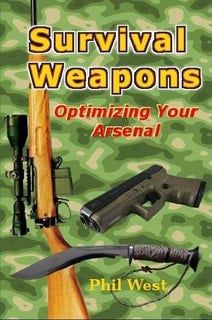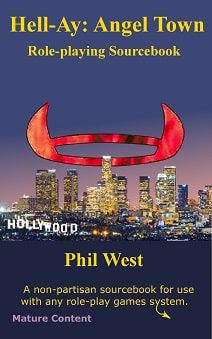
Added 24-4-24
The mecha suit is a popular theme in science fiction. It ranges from the man-sized armour of Robert A. Heinlein and Joe Haldeman, to the towering giants of “Battletech” and “Full Metal Panic”.
This discussion will concentrate on the medium mecha or large exo-suit of about three to four metres height. A mecha of this size is most probably the easiest to develop.

If we reality check this idea, it becomes obvious a mecha will not be a very useful front-line combat system.
Many mecha in science fiction can fly, but this is unlikely to be a practical capability to provide anytime soon.
A walking machine will be slower than a conventional military vehicle. If we try to make it run faster, the probability of a mechanical failure is likely to become unacceptably high.
The mecha cannot ride in a personnel carrier, and is probably too heavy and too exposed to ride on top of one.
The slow‑moving mecha will be a much larger target than a conventional infantryman, and cannot hide or take cover as readily as an infantryman.
Ground pressure of a two‑footed mecha is going to be much higher than that of a tracked vehicle. This limits the practical mass of the mecha. A limitation in mass means only a limited level of armour and ammunition can be mounted.
Clearly a mecha will be vulnerable to autocannon and light anti-tank weapons. Heavy machine gun and grenade launcher fire may also be a problem.
As a front-line combat system, the medium mecha appears to be a non-starter.

However, a battlefield involves much more than just the front line.
The military mecha that I see as being useful is not the armoured machine commonly depicted in science fiction.
What I envision is much more like the P-5000 Powered Work Loader aka “powerloader” seen in the movie “Aliens”. (The “Aliens Colonial Marines Technical Manual” uses the single word “powerloader”)
As depicted in the movie, the powerloader did not make much sense, except for fighting alien queens.
Within a large spaceship, a conventional fork lift would be much more practical.
If we place a machine like the powerloader down in the field, with uneven terrain, then the potential begins to become apparent.
The medium mecha may prove to be a very useful labour system for engineering, maintenance and logistical units.
Imagine a trench system that has just been dug by a mechanical trenching machine. The occupants will want to add some overhead cover to give them a chance against artillery and drone attacks. How much faster this could be done if the engineering unit had brought a couple of mecha suits that could carry logs from the nearby forest and help lay them in place over the trench!
A major earthquake has hit a city. At the airport, mecha suits help quickly unload vital supplies from cargo aircraft. In the city, mechas help dig through the rubble for survivors and move large pieces of debris. The mechas can reach places bulldozers cannot.
A single 155mm artillery shell masses 45 kg. A mecha suit can easily carry a whole pallet of shells to a gun position. The mechas were also useful when man-handling the guns into position. Each artillery battery includes several porter‑mechas. These are moved in the back of standard military cargo trucks.
In addition to moving heavy loads about, the mecha is also useful for heavy maintenance. If you need to change a tire or fix a track, the mecha is stronger than a jack. If a vehicle gets stuck in the mud or runs into a ditch, the mecha may lend a hand.
Ground pressure will be a design consideration for a heavy walking machine.
The feet of an elephant expand when weight is placed on them, and contract slightly as the foot is lifted. This helps the elephant pull free of soft mud. A similar mechanism is worth considering for the mecha.
The feet of the mecha are likely to spread their load by extending out to the front, outside and back in a snowshoe-type structure. Oddly, feet of this shape were common on clockwork toy robots of my childhood.
Retractable claws/spikes/crampons in the feet would help the mecha traverse certain types of terrain or help anchor the machine in place when necessary.
The Aliens’ powerloader surrounded the operator with a protective cage. When used in the field, the mecha operator will need to be protected from cold, heat, wind, sun, snow, sand and rain.
A sip tube and a supply of drinking water should be incorporated into the cabin.
Lights will be needed for operation in low light. A barcode or QR scanner may be needed to identify stores.
A powered winch might prove useful for some roles.
Mecha in artillery batteries may come under counter-battery fire. Mecha in other rear areas may encounter artillery fire or sniping from guerrillas. Some level of fragmentation and small arms protection may be prudent.
The hip joints, and possibly the knees, would need to incorporate some form of semi-universal bearing in the joint so that the hips may swivel and the legs may exploit a wide range of movement and configuration depending on the situation.
The feet of the mecha will be symmetrical, so that a single unit may be used for either foot. This ambidextrous design strategy will be applied to many other components of the mecha.
Where possible the mecha will use components already in use for other common military or commercial equipment.
To assist in carrying heavy loads, a pair of supporting prongs may be folded down from the front of the mecha.
On the back of the mecha will be a structure like a shelved packboard. This carrying area may be loaded with stores by other mecha. Alternatively, this area may be loaded with ballast when the mecha is attempting to move a particularly heavy load that might overbalance it.
How the mecha’s arms will be controlled will be another critical design objective. Fortunately, science fiction has made a number of suggestions.
The landmates from Masamune Shirow’s “Appleseed” often have two pairs of arms. The smaller, inner pair of arms fit over the operator’s own. These arms extend outside the chest plate to give a greater range of movement. The larger, outer arms are synchronized to duplicate the motions of the operator’s own arms. On some models, this synchronization may be switched off and the hands of the inner arms used for fine manipulation.
The Aliens’ powerloader mounted its arms at the very top of the machine’s body. Each ended in a large rotatable “vice manipulator” that might be a good option for many jobs.
Some tasks may need different forms of manipulator. A mecha might mount a second pair of large or medium arms beneath the main arms. These arms might be equipped with strong three-fingered hands.
Probably only one pair of work arms would be synchronized to the operator’s arms at a time.
One pair of arms may be locked into position to hold an object while the other arms work on it.
The work arms might have mounting points for a variety of other tools.
On steep terrain, the mecha may need to scramble and use its arms to assist movement. On soft ground or snow, it may need to move like a gorilla on four (or six) limbs.
It may be argued that many of these relatively menial tasks might be performed by a large robot. In some cases that may be true. However, once we add in considerations such as combat conditions and irregular terrain, it will be seen that some of these tasks will require a degree of imagination, creativity and experience to execute effectively, some things that robotic systems do not yet have.
Many of the previously suggested applications for a medium mecha are by no means limited to military usage. Potentially a mecha initially developed for the military may see even wider use for civilian endeavours.
By the Author of the Scrapboard : | |
|---|---|
 | Attack, Avoid, Survive: Essential Principles of Self Defence Available in Handy A5 and US Trade Formats. |
 | |
 | Crash Combat Fourth Edition Epub edition Fourth Edition. |
 | |
 | |